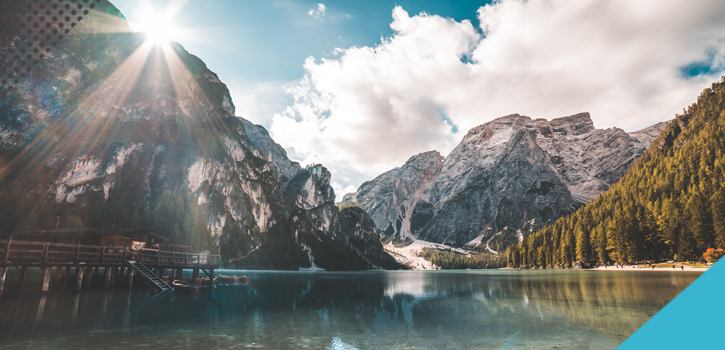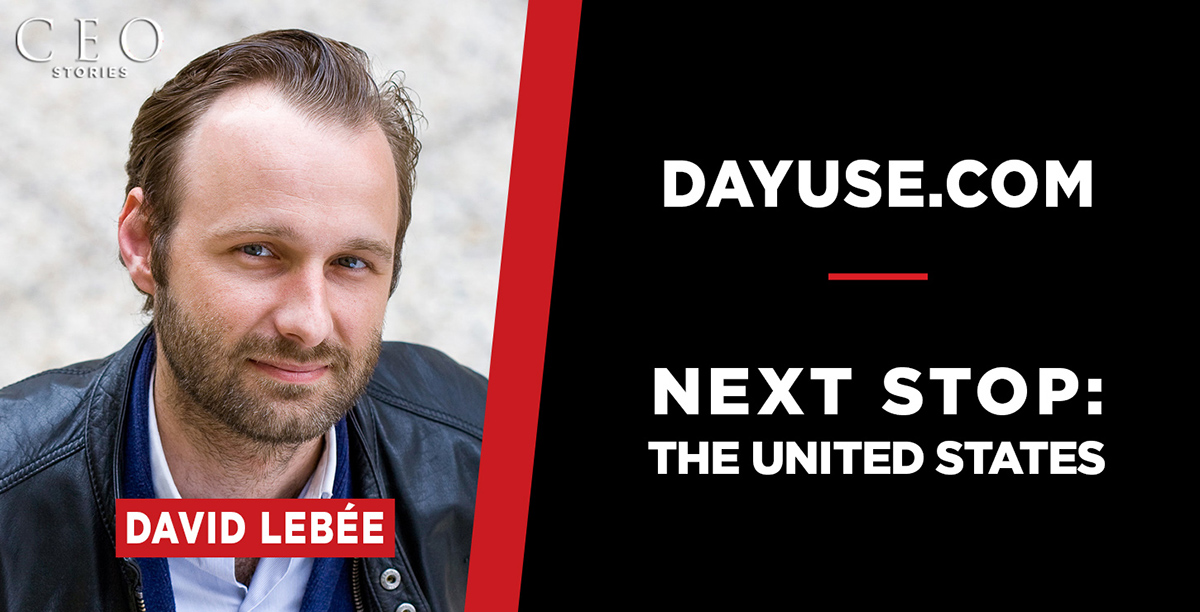Whether you’re a seasonal rental travel agency that manages a mobile application connecting travellers around the entire world or something else entirely… Whatever your concept, there are some basics you must take into account if you want to get started in international tourism. A sector with strong growth worldwide, tourism is full of business opportunities with 7% average progression per year. But it is also a sector subject to many variations dependent on the season, politics/economics, new travel destination expectations from the general public and the latest trends in concepts… So how do you get started in international tourism?
Learn more about cross-border ecommerce in our updated guide
Tourism company: how to develop internationally
1. Paint a clear picture of the destination countries
- The market potential: size of the competition, cultural/religious context (which could influence your development), etc.
- Legislation: potential barriers to your establishment/development (environmental standards, tariff regulations, etc.), State aid (aid from public authorities, legislation favourable to foreign investments, etc.)
- The economic/political situation: the purchasing power of the population (and therefore potentially your target base), political stability, the infrastructure for getting there (airports, railways or sea travel/waterways, etc.)
All of these will certainly narrow down your initial choices and will determine your business model.
Short of inspiration? Here is some information that should help you draw up a list of your preferred destinations:
- the destinations seeing the most progress are Europe and Africa, especially around the Mediterranean sea.
- Spain is about to lap the United States for the title of the second most touristic country in the world. France, however, remains as the number one for tourists entering.
- the European Union recorded 500 million tourists entering in 2016, which is 342 billion euros (=31% of world packages). It also has 5 destinations in the world top 10: France, Spain, Italy, Germany and the United Kingdom.
2. Adapt your branding based on the international target
Now that you have drawn up a list of countries, you need to decide on the targets (the buyer personas) because your English clients, for example, will most likely be very different from your other clients for example. You may need to go through an adaptation phase both of the product range (the services on offer, the pricing, etc.) and your branding, e.g. your name. A word may mean one thing in the UK but something else entirely in another country. You therefore need to pay very close attention when translating your concept and your name.
Some businesses have had to adapt in order to export a product or a concept:
- The Unilever brand named their softener “Cajoline” in France and “Snuggle” in England to keep the idea of softness.
- Coca-Cola chose the name “Diet Coke” in the United States but went for “Coca-Cola Light” in Europe because the word “diet” evoked restrictive diet regimes.
- Danone opted for “Dannon” so it was easier to remember in the United States.
So many nuances and subtleties that you need to know how to master before starting off in international tourism, which is why it is helpful to refer to professionals in tourist translation.
3. Get support in finding out about a country’s customs
Institutions such as The Institute of Export and International Trade, The Federation of Small Businesses, The Department for International Trade and The British Chambers of Commerce help companies to expand internationally. You can find out more in this blogpost.
The EDEN network (European Destination of ExcelleNce)
A genuinely helpful platform for the exchange of best practices Europe-wide, that helps professionals maximise their potential and develop tourist services that are compliant with the principles of sustainable development.
http://ec.europa.eu/growth/tools-databases/eden_en
International tourism: trends to keep an eye on
4. Put together a range with a sustainable dimension
Sustainable tourism is a leading trend in international tourism currently, defined by the World Tourism Organization (UNWTO) as “Tourism that takes full account of its current and future economic, social and environmental impacts, addressing the needs of visitors, the industry, the environment and host communities“.
It is a balance between three key elements:
Reasonable use of environmental resources
This includes the safeguarding of natural resources and preservation of biodiversity… including wildlife. Certain tourist attractions have been increasingly called into question lately, which may make you want to review your product range. For example, hiking on elephants in Thailand, shark cage diving in South Africa, etc. Tourists are avoiding these types of activities more and more now in cases where animal welfare is seemingly a secondary concern.
Respect for the socio-cultural authenticity of host communities
Traditional values, intercultural tolerance, etc. This is why sometimes it is important to stop visiting places that locals wish to preserve. In Australia, Ayers Rock has long been a popular spot for climbing by tourists, which many Aboriginal peoples of Australia disapproved of. After several years of debate, the local peoples won the day and from 2019 this location will be preserved from tourists’ use.
Ensuring sustainable economic activity in the long term so that everybody benefits
Stable jobs, benefit options and social services for host communities, reduction in poverty, etc.
You can even go as far as being certified as an ecotourism/sustainable tourism agency (examples include GSTC Sustainable Tourism, Green Key, Green Globe, National Tourism and Handicap certification, etc.) This is a non-negligible asset for boosting your international tourism agency‘s attractiveness and expanding your target base to travellers who are sensitive to responsible tourism.
5. Don’t forget to go digital
Online booking platforms, social networks, bloggers, influencers… Today the user journey has clearly gone digital; 90% of trips and actitivies are booked online. –
Find the best rates on booking.com, Trivago, Expedia, lastminute.com, etc.
- Check online reviews and testimonials on TripAdvisor
- Get inspired by using Pinterest or Instagram to find your next destination –
- Follow influencer bloggers/vloggers that are asked by tourism’s biggest players to promote their services such as Jamie Curry on her channel Jamie’s World, with 66,294,584 YouTube page views to date or Mark Wiens who has 2,649,313 subscribers on his YouTube channel.
- Make more out of mobile: over 87% of bookings that are linked to tourism (transport, accommodation, etc.) are made through mobile technology.
Any worthwhile international tourism player must now build a real digital strategy the way Club Med has; all their websites have been redesigned for responsiveness (adapted for reading on a mobile phone) and the brand has developed an app to optimise customer experience before, during and after their stay (information about bars, restaurants and shows, activity booking etc.); and their agencies have been redesigned to give clients an immersive experience (giant screens showing pictures and videos of the Villages, self-service tablets, VR headsets for total immersion in the various destinations and activities available…). Results: mobile use rose from 30% in 2013 to 55% at the end of 2016.
6. Stay tuned to new concepts in tourism
Above and beyond the challenge of emerging from competition that is already very well established, nowadays you also might need to adapt to tourists’ new requirements, especially in certain segments of the international tourist trade such as: ecotourism, gay-friendly travel, cultural trips (spiritual or historic pilgrimages), wellness trips, holidays staying with locals, business tourism (visit from one Irish distillery to an artisanal cheese maker in Greece, etc.)
These aren’t destination-based trips but theme-based trips positioned on niche concepts that are more unusual than traditional tourism. And this is something Les Arènes publishing is very familiar with. This travel guide publishing company has released a collection of new “Out of the Box” guides aimed at discovering the most avant-garde neighbourhoods of cities. The guide to New York leads us to a world of rooftops, backyards, food trucks, brunchs and flea markets…
In contrast, some new concepts want to counter the sometimes negative effects of our increasingly digital world, such as barouder.fr, a French online travel agency that is aimed at adventure-loving thirty-somethings who want to travel in groups: “In a world where digital technology is devouring everything, starting with the relationships between people, I wanted to find a human-centric solution.” says the founder, Fabrice Coradin. Travellers fill out a registration form, their profile is created and the site then offers them trips that correspond to the details they filled in. Once they have decided on a trip, the “baroudex” (community members) chat to each other to form a group and set off together. In order to avoid mass tourism, the site restricts groups to 12 people.
International tourism is a sector in perpetual motion. In order to succeed and break away from package deals, you need to keep your eyes peeled, follow the niche markets and remain highly adaptable in terms of services, product range, experiences and destinations…
If you want to find out more about expanding internationally, check out our updated guide on Cross-border Ecommerce!







